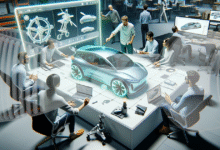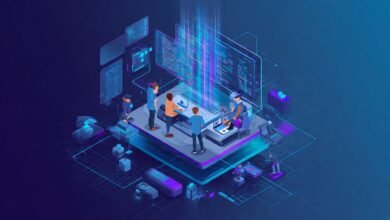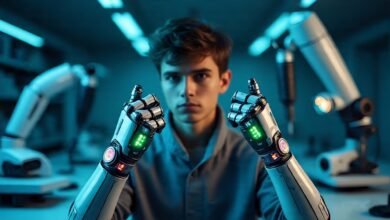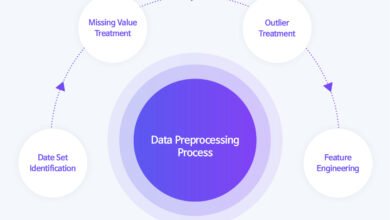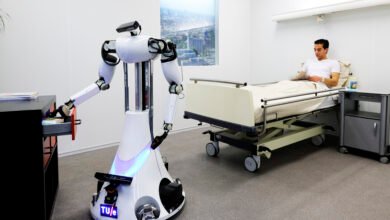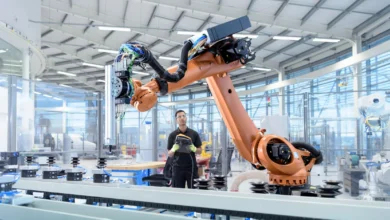Computer Vision Technology: Applications and Innovations
Discover how computer vision technology transforms industries through AI applications, machine learning innovations, and cutting-edge image
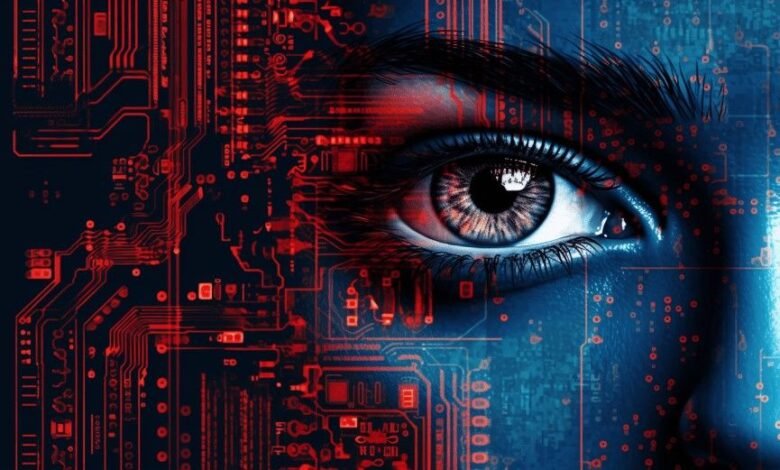
The technological landscape has witnessed an unprecedented transformation with the emergence of computer vision technology, a revolutionary field that enables machines to interpret and understand visual information much like human beings. This groundbreaking artificial intelligence discipline has evolved from theoretical concepts into practical solutions that are reshaping industries across the globe, from healthcare and automotive to retail and manufacturing.
Computer vision applications have become the cornerstone of modern digital transformation, offering businesses innovative ways to automate processes, enhance user experiences, and drive operational efficiency. The technology leverages sophisticated machine learning algorithms and deep learning models to process, analyze, and extract meaningful insights from images, videos, and real-time visual data streams.
In 2024, the impact of computer vision across various industries is undeniable. This technology is more than just a vision of the future; it’s a tangible reality of the present, boosting operational efficiency, enriching customer experiences, and driving substantial progress across various industries. The rapid advancement of AI-powered systems has accelerated the adoption of computer vision solutions, making them more accessible, accurate, and cost-effective than ever before.
The significance of computer vision technology extends beyond mere automation—it represents a fundamental shift in how machines perceive and interact with the physical world. The rapid evolution of AI models has sped up the use of computer vision. Computer vision leaps forward in 2024. Healthcare sees AI diagnose diseases. Self-driving cars navigate city streets. Drones monitor crop health. Smart stores offer seamless checkout.
From object detection and facial recognition to predictive analytics and quality control systems, computer vision is revolutionizing traditional business models and creating new opportunities for innovation. This comprehensive exploration delves into the multifaceted applications, cutting-edge innovations, and transformative potential of computer vision technology in today’s rapidly evolving digital ecosystem.
Computer Vision Technology
What is Computer Vision
Computer Vision Technology is a multidisciplinary field that combines artificial intelligence, machine learning, and image processing to enable computers to identify, analyze, and understand visual content from the real world. Just like human vision, computer vision uses pictures and videos as its input. Computer vision utilizes algorithms and artificial intelligence to make sense of visual information. These algorithms can be incredibly complex, but the goal is simple – enable machines to extract meaning from visual data.
The technology encompasses various techniques, including pattern recognition, feature extraction, and neural networks that work together to process visual information. Computer vision systems can perform tasks such as image classification, object detection, semantic segmentation, and motion tracking with remarkable accuracy and speed.
Core Components of Computer Vision Systems
Computer vision technology relies on several fundamental components that work synergistically to process and interpret visual data:
Image Acquisition forms the foundation of any computer vision system, utilizing cameras, sensors, and other imaging devices to capture visual information. The quality and characteristics of input data significantly impact the overall system performance.
Preprocessing involves enhancing and preparing raw visual data for analysis through techniques such as noise reduction, contrast adjustment, and image scaling. This crucial step ensures optimal conditions for subsequent processing stages.
Feature Extraction identifies and isolates relevant visual patterns, edges, textures, and shapes that help distinguish different objects or regions within images. Advanced machine learning models can automatically learn and extract complex features from visual data.
Pattern Recognition applies sophisticated algorithms to classify and identify objects, faces, or specific visual elements based on extracted features. Deep learning networks have revolutionized this aspect by achieving human-level accuracy in many recognition tasks.
Key Applications of Computer Vision Technology
Healthcare and Medical Imaging
Computer Vision Technology in healthcare has transformed medical diagnosis and treatment procedures, offering unprecedented accuracy and efficiency in patient care. Medical imaging analysis powered by AI algorithms can detect diseases earlier than traditional methods, potentially saving countless lives through improved diagnostic capabilities.
Radiology represents one of the most successful implementations of computer vision in healthcare. Advanced image recognition systems can analyze X-rays, MRIs, CT scans, and other medical images to identify tumors, fractures, and abnormalities with remarkable precision. These systems assist radiologists in making more accurate diagnoses while reducing the time required for image interpretation.
Pathology has embraced computer vision for microscopic image analysis, enabling automated detection of cancer cells and other pathological conditions. Machine learning models trained on vast datasets of medical images can identify subtle patterns and anomalies that might be missed by human observers.
Surgical applications utilize computer vision for real-time guidance during procedures, enhancing precision and reducing risks. Robotic surgery systems incorporate visual feedback to assist surgeons in performing complex operations with greater accuracy and minimal invasiveness.
Autonomous Vehicles and Transportation
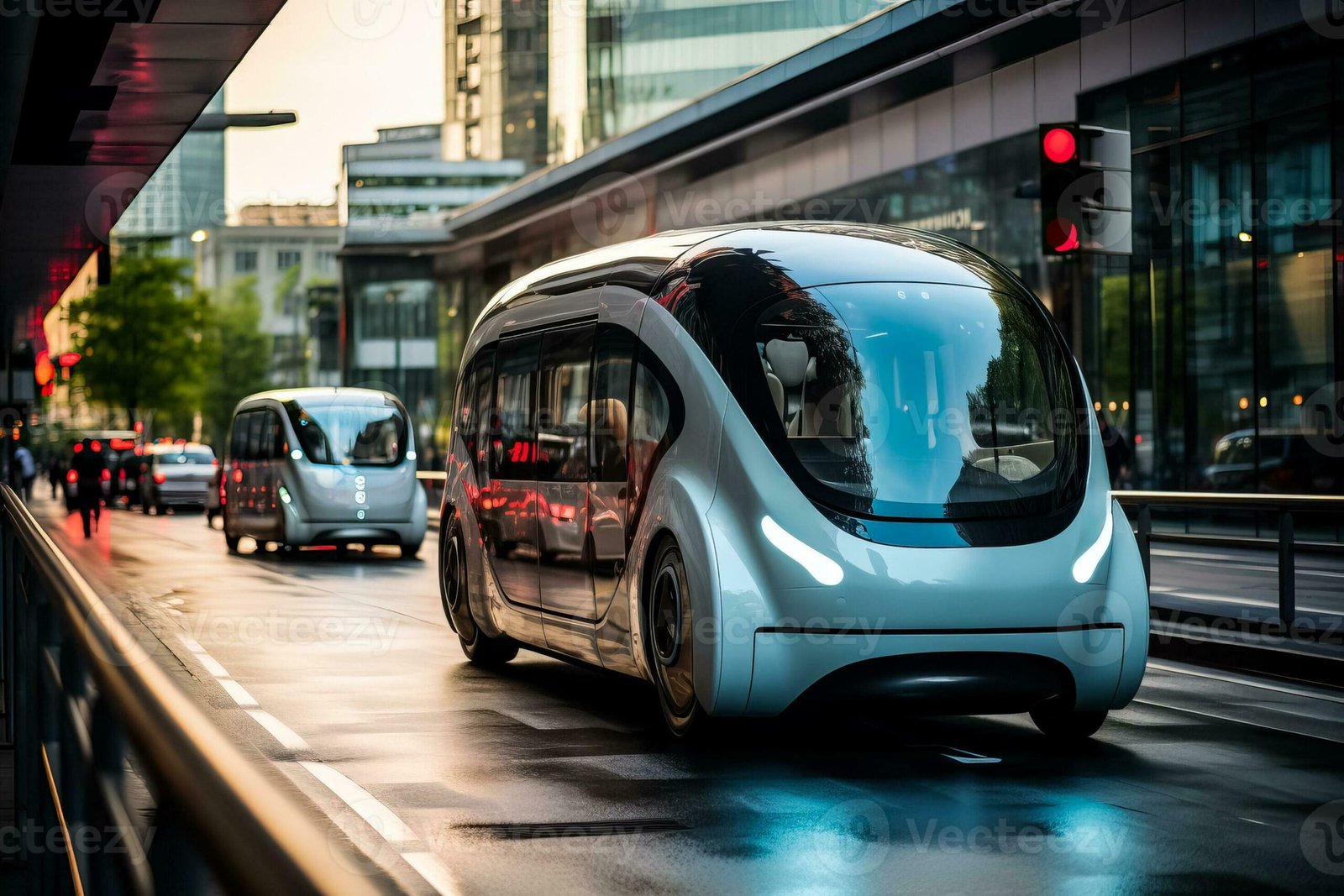
The automotive industry has been at the forefront of computer vision innovation, with autonomous vehicle technology representing one of the most ambitious applications of visual AI systems. Computer vision is used to detect and classify objects (e.g., road signs or traffic lights), create 3D maps or motion estimation, and has played a key role in making autonomous vehicles a reality. Self-driving cars collect data on their surroundings from sensors and cameras, interpret it, and make driving decisions.
Object detection systems in autonomous vehicles must process visual information in real-time to identify pedestrians, other vehicles, road signs, and obstacles. The technology combines multiple computer vision techniques, including semantic segmentation, depth estimation, and motion tracking, to create a comprehensive of the driving environment.
Advanced Driver Assistance Systems (ADAS) utilize computer vision for features such as lane departure warning, collision avoidance, and parking assistance. These systems enhance road safety by providing drivers with real-time alerts and automated interventions when necessary.
Traffic management systems employ computer vision for monitoring traffic flow, detecting violations, and optimizing signal timing. Smart city initiatives increasingly rely on visual AI to improve urban transportation efficiency and reduce congestion.
Manufacturing and Quality Control
Computer vision technology has revolutionized manufacturing processes through automated quality control systems that ensure product consistency and reduce defects. Manufacturers now use computer vision for warehouse management, inventory tracking, and organizational efficiency. Companies like Amazon and Walmart are using CV-based drones for real-time inventory checks, quickly identifying empty containers to facilitate streamlined restocking.
Visual inspection systems can detect surface defects, dimensional variations, and assembly errors with greater accuracy and speed than human inspectors. These systems operate continuously without fatigue, maintaining consistent quality standards throughout production cycles.
Predictive maintenance applications use computer vision to monitor equipment condition through visual analysis of components, identifying potential failures before they occur. This proactive approach reduces downtime and maintenance costs while improving overall equipment effectiveness.
Process optimization leverages visual data to analyze production workflows, identify bottlenecks, and improve efficiency. AI-powered systems can recognize patterns in manufacturing processes that lead to optimization opportunities and cost reductions.
Retail and E-commerce
Computer Vision Technology in retail has transformed both online and offline shopping experiences, creating new possibilities for customer engagement and operational efficiency. Visual search technology allows customers to find products by uploading images, revolutionizing product discovery and comparison shopping.
Cashierless stores represent a significant innovation in retail technology, utilizing multiple computer vision techniques to track customer purchases and enable seamless checkout experiences. These systems combine object recognition, human pose estimation, and activity recognition to accurately monitor shopping behavior.
Inventory management benefits from computer vision through automated stock monitoring, product placement analysis, and demand forecasting based on visual data. Smart shelving systems can detect when products need restocking and provide real-time inventory updates.
Customer analytics powered by computer vision provides insights into shopping patterns, customer demographics, and store layout effectiveness. Privacy-compliant systems can analyze foot traffic, dwell times, and product interactions without compromising individual privacy.
Innovations and Emerging Trends
Deep Learning and Neural Networks
The integration of deep learning technologies with computer vision has catalyzed remarkable advancements in visual AI capabilities. Convolutional Neural Networks (CNNs) have become the backbone of modern computer vision systems, enabling unprecedented accuracy in image classification and object detection tasks.
Vision Transformers represent a paradigm shift in computer vision architecture, applying attention mechanisms originally developed for natural language processing to visual tasks. Innovations like GANs, Vision Transformers, and Federated Learning are solving critical challenges and shaping the future of Computer Vision.
Generative Adversarial Networks (GANs) have opened new possibilities for image synthesis, data augmentation, and style transfer applications. These networks can generate realistic images, enhance low-resolution content, and create entirely new visual content for various applications. Transfer Learning techniques enable computer vision models to leverage pre-trained networks for specific applications, reducing training time and data requirements while maintaining high performance levels.
Edge Computing and Real-time Processing
Edge computing has emerged as a critical enabler for real-time computer vision applications, bringing processing power closer to data sources and reducing latency. CCTV cameras often use edge devices for real-time reporting and analytics, enabling immediate response to security threats and anomalies.
Mobile computer vision applications benefit significantly from edge processing, enabling sophisticated visual AI capabilities on smartphones and tablets without requiring cloud connectivity. This development has democratized access to computer vision technology and expanded its practical applications.
IoT integration with computer vision creates smart sensor networks that can monitor environments, detect anomalies, and trigger automated responses in real-time. These systems are particularly valuable in industrial automation, security monitoring, and environmental surveillance. Optimization techniques for edge deployment focus on model compression, quantization, and efficient architecture design to maximize performance within hardware constraints while maintaining accuracy.
Augmented Reality and Mixed Reality
Computer vision technology serves as the foundation for augmented reality (AR) and mixed reality (MR) applications, enabling seamless integration of digital content with the physical world. Simultaneous Localization and Mapping (SLAM) algorithms use computer vision to track device position and orientation while mapping the surrounding environment.
Object tracking and pose estimation capabilities allow AR applications to accurately place virtual objects in real-world spaces and maintain their position as users move. These technologies have applications in gaming, education, training, and industrial visualization.
Marker-less tracking systems eliminate the need for physical markers by using natural features in the environment for registration and tracking. This advancement makes AR applications more practical and user-friendly for widespread adoption. Real-time rendering optimization ensures smooth AR experiences by efficiently processing visual information and generating appropriate digital overlays without perceptible delay.
Industry-Specific Applications
Agriculture and Precision Farming
Computer vision applications in agriculture have revolutionized farming practices through precision agriculture techniques that optimize crop yields while minimizing resource consumption. Technologies such as harvest, seeding, and weeding robots, autonomous tractors, and vision systems to monitor remote farms, and drones for visual inspection can maximize productivity with labor shortages.
Crop monitoring systems use drone technology and satellite imagery combined with computer vision algorithms to assess plant health, identify diseases, and detect pest infestations. These systems enable farmers to take targeted action before problems spread across entire fields.
Automated harvesting robots equipped with computer vision can identify ripe fruits and vegetables, determining optimal harvest timing while reducing labor costs and improving efficiency. These systems must distinguish between ripe and unripe produce while navigating complex farm environments.
Livestock management applications use computer vision for animal identification, behavior monitoring, and health assessment. Facial recognition systems for cattle and other livestock can track individual animals throughout their lifecycle, monitoring weight gain, health status, and breeding cycles.
Security and Surveillance
Computer vision technology has transformed security and surveillance operations through intelligent monitoring systems that can detect threats, identify individuals, and analyze behavioral patterns in real-time. Facial recognition systems provide access control and identity verification capabilities for secure facilities and border control applications.
Anomaly detection algorithms can identify unusual activities or behaviors in surveillance footage, alerting security personnel to potential threats or safety hazards. These systems reduce the burden on human operators while maintaining continuous monitoring capabilities.
Crowd analysis applications use computer vision to monitor large gatherings, detecting overcrowding, unusual movements, or potential security risks. These systems are particularly valuable for event management and public safety applications. Perimeter security systems combine computer vision with other sensors to create comprehensive protection for critical infrastructure, military installations, and high-value assets.
Sports and Entertainment
Computer Vision Technology applications in sports and entertainment have created new possibilities for performance analysis, fan engagement, and content creation. Player tracking systems analyze athletic performance, providing coaches and athletes with detailed insights into movement patterns, technique, and tactical decisions.
Broadcast enhancement technologies use computer vision to generate real-time statistics, create augmented reality overlays, and provide automated camera control for live events. These systems improve viewer experience while reducing production costs.
Motion capture systems powered by computer vision enable realistic character animation for movies, video games, and virtual reality applications. Markerless motion capture eliminates the need for special suits and markers, making the process more efficient and natural. Interactive entertainment applications use computer vision for gesture recognition, pose estimation, and environment mapping, creating immersive gaming and interactive media experiences.
Challenges and Considerations

Technical Limitations
Despite significant advances, computer vision technology still faces several technical challenges that limit its effectiveness in certain applications. Lighting conditions significantly impact system performance, with poor illumination or extreme contrasts potentially degrading accuracy and reliability. Occlusion handling remains a complex challenge when objects are partially hidden or overlapped, requiring sophisticated algorithms to infer complete object shapes and locations from partial visual information.
Scale variations and perspective changes can affect object recognition accuracy, particularly when systems encounter objects at different distances or viewing angles than those present in training data . Real-time processing requirements demand optimization of algorithms and hardware to achieve acceptable performance levels while maintaining accuracy, especially in applications requiring immediate responses.
Privacy and Ethical Concerns
Privacy protection represents a critical consideration for computer vision deployments, particularly in public spaces and consumer applications. Facial recognition technology raises concerns about surveillance, consent, and potential misuse of biometric data.
Data security requirements mandate robust protection of visual information and associated metadata, especially in applications involving personal or sensitive content. Encryption and access control measures must be implemented throughout the data lifecycle.
Algorithmic bias can lead to unfair or discriminatory outcomes when computer vision systems are trained on biased datasets or reflect societal prejudices. Diverse training data and bias detection techniques are essential for developing fair and inclusive systems. Regulatory compliance varies across jurisdictions and applications, requiring careful consideration of legal requirements for data collection, processing, and retention in computer vision deployments.
Implementation Challenges
Cost considerations include hardware requirements, software licensing, training data acquisition, and ongoing maintenance expenses that can be substantial for comprehensive computer vision deployments. Integration complexity involves connecting Computer Vision Technology with existing infrastructure, databases, and workflows while maintaining compatibility and performance standards.
Training data quality and quantity requirements can be significant barriers to implementation, particularly for specialized applications requiring large volumes of labeled visual data. Performance optimization for specific use cases often requires extensive customization and fine-tuning of algorithms and parameters to achieve desired accuracy and efficiency levels.
Future Outlook and Predictions
Technological Advancements
The future of computer vision technology promises continued innovation through advancing artificial intelligence research and increasing computational power. Quantum computing applications may eventually revolutionize visual processing capabilities, enabling complex pattern recognition tasks that are currently computationally prohibitive. Neuromorphic computing architectures inspired by biological visual systems could provide more efficient and adaptive computer vision solutions, particularly for edge computing applications with power constraints.
Multi-modal AI systems that combine computer vision with other sensory inputs will create a more comprehensive of environments and situations, leading to more intelligent and context-aware applications. Automated machine learning for computer vision will democratize access to advanced visual AI capabilities, allowing organizations without deep technical expertise to develop and deploy custom solutions.
Market Growth and Adoption
Industry adoption of computer vision technology is expected to accelerate across sectors as costs decrease and capabilities improve. Small and medium enterprises will increasingly access Computer Vision Technology solutions through cloud-based services and pre-built applications.
Consumer applications will continue expanding as mobile devices become more powerful and computer vision APIs become more accessible to developers. Social media platforms, e-commerce sites, and mobile applications will integrate more sophisticated visual AI features.
Investment trends indicate continued growth in computer vision startups and research initiatives, with particular focus on specialized applications and vertical-specific solutions. Standardization efforts will improve interoperability between different Computer Vision Technology systems and platforms, facilitating broader adoption and integration across organizations.
Emerging Applications
Environmental monitoring applications will leverage Computer Vision Technology for climate change research, wildlife conservation, and pollution detection through analysis of satellite imagery and sensor data. Smart city initiatives will increasingly rely on computer vision for traffic optimization, public safety, infrastructure monitoring, and resource management across urban environments.
Personalized medicine will benefit from computer vision applications in diagnostic imaging, treatment planning, and patient monitoring, enabling more precise and individualized healthcare approaches. Educational technology will incorporate Computer Vision Technology for adaptive learning systems, automated assessment, and interactive educational experiences that respond to student behavior and engagement.
More Read: The Future of Natural Language Processing Technology
Conclusion
Computer vision technology has emerged as a transformative force across industries, revolutionizing how machines perceive and interact with the visual world through advanced artificial intelligence and machine learning capabilities. From healthcare diagnostics and autonomous vehicles to manufacturing quality control and retail innovation, computer vision applications continue expanding into new domains while improving existing processes. The technology’s evolution through deep learning, edge computing, and real-time processing innovations promises even greater capabilities and accessibility in the coming years.
Despite challenges related to privacy, technical limitations, and implementation complexity, the future outlook for computer vision remains exceptionally promising, with emerging applications in environmental monitoring, smart cities, and personalized medicine set to further demonstrate its transformative potential. Organizations that strategically adopt and integrate Computer Vision Technology solutions will be well-positioned to capitalize on the competitive advantages and operational efficiencies that this revolutionary technology provides.

